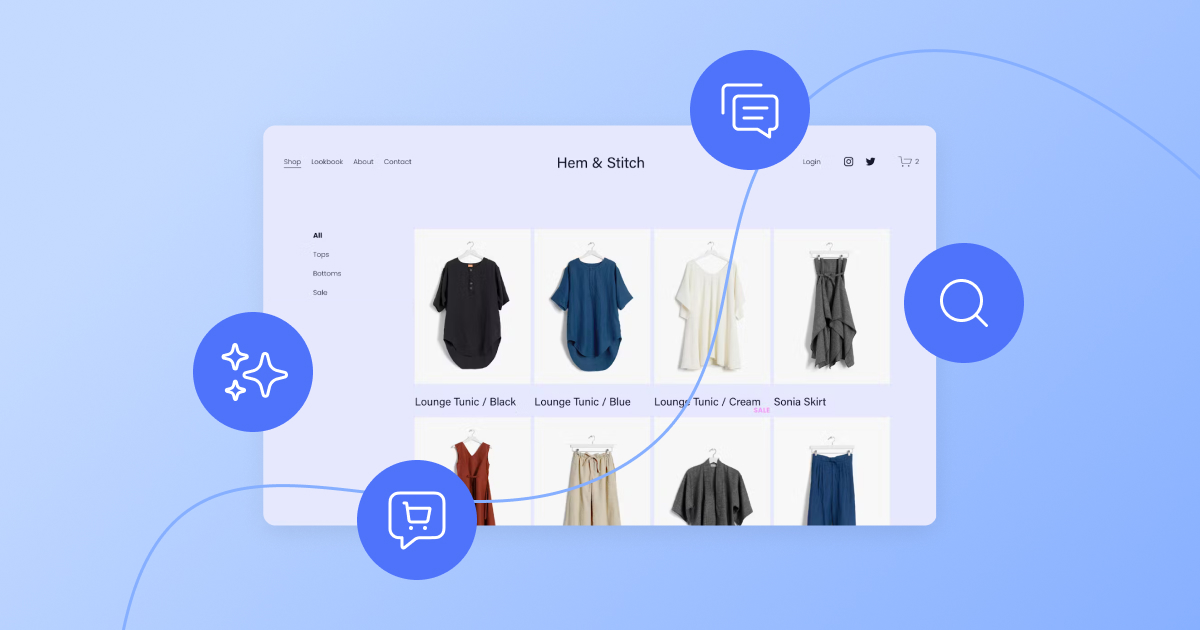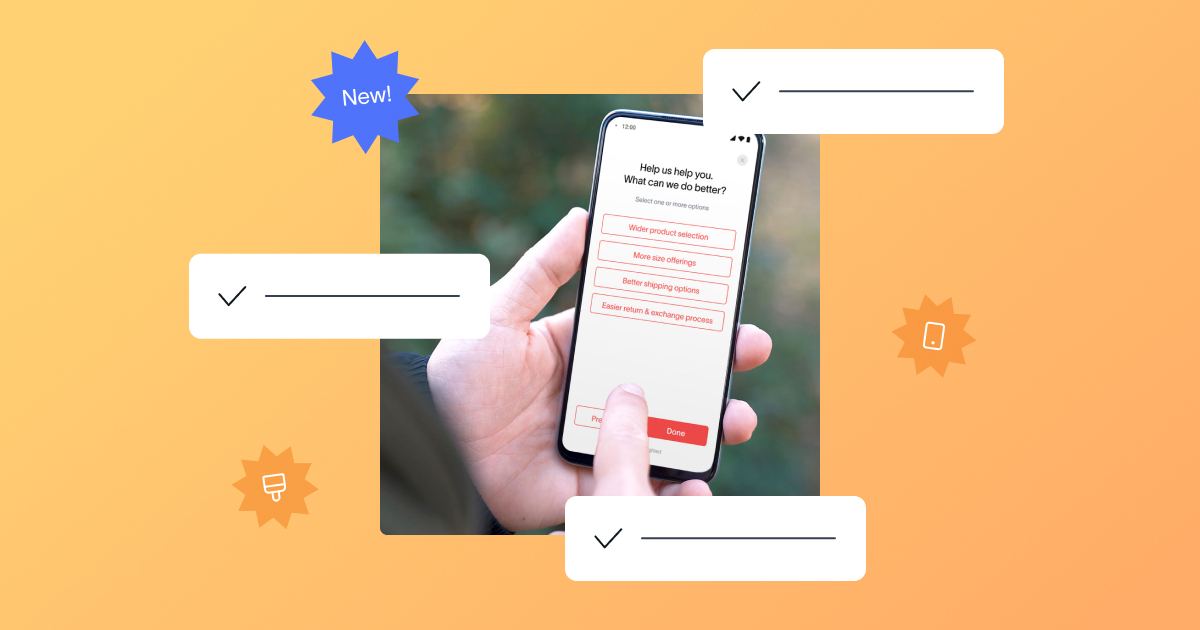Back in 2015, Forrester Research uncovered that customer experience was the number one priority for business and technology leaders. Fast forward almost 5 years and CX is still top of mind for brands looking to differentiate themselves from their competitors.
Considering that it costs up to 6x more to attract a new customer than to retain an existing one, the immediate and long-term ROI of customer experience is encouraging many businesses to incorporate CX metrics and benchmarks into their definitions of brand health and success. This focus on customer experience is yielding some impressive returns:
- The XM Institute found that companies that earn $1 billion annually can expect to earn, on average, an additional $700 million within 3 years of investing in customer experience. For SaaS companies, in particular, they can expect to increase revenue by $1 billion.
- A Walker study found that by the end of 2020, customer experience will overtake price and product as the key brand differentiator.
Investing in customer experience is incredibly lucrative, and for one major reason: It’s now expected by your customers. Providing an exceptional customer experience is mandatory for any business to succeed in a highly digital, highly on-demand marketplace. The good news is that making a business case for CX investment is easier than ever before — with hundreds of industry statistics proving that customer experience works.
That said, customers are becoming more sensitive to when brands fail to do this. Therefore, we took a look at 5 must-embrace customer experience trends for 2020 and how you can stay ahead of customers’ evolving expectations.
Customer experience trend #1: Customer experience is expected everywhere and at all times
According to Salesforce, customer expectations are at an all-time high. In a recent report, they discovered that 67% of consumers believe that their standards for good experiences are higher than ever. The same report also revealed that 84% of customers say being treated like a person, not a number, is very important to winning their business and that 51% of businesses ‘fall short’ of consumer expectations.
Not only are expectations reaching unprecedented levels, they are doing so in an omnichannel world. The number of companies investing in the omnichannel experience has grown from 20% to 80% since 2010. This means that brands need to measure and manage customer experience at every stage of the customer journey, and nothing highlights this more than how disappointed customers currently are in the quality of mobile brand interactions.
Case in point: 52% of all internet traffic is now via a mobile device and this number is expected to rise. That said, a whopping 90% of customers report having a poor experience when seeking customer support on mobile devices.
Customers simply expect better when soliciting support on mobile. Current advancements in technology, which we’ll discuss next, are on the right track for meeting these expectations, and brands who adopt them may very well separate themselves from their competitors.
Customer experience trend #2: CX meets AI
From fighting cyber threats to enhancing online shopping experiences, artificial intelligence (AI), specifically machine learning, leverages its predictive capabilities to streamline thousands of processes across a variety of industries. Fueled by big data, AI is reshaping how brands scale their businesses, improve product offerings, and connect with customers.
According to Gartner, 30% of all B2B companies will employ artificial intelligence to augment at least one of their primary sales processes by 2020. Additionally, upwards of 40% of all data analytics projects will relate to an aspect of customer experience. In light of this, some of the ways AI will be used to enhance customer experience in 2020 will include:
- The proliferation of chatbots like “Amelia,” who handles more than 250,000 conversations each month and is used by more than 75% of Allstate call center employees.
- Voice recognition AI tools: Technology that uses machine learning to process natural language. Much like Alexa or Google Home, these speech-recognition tools are designed to improve customer experience by allowing consumers to interact more ‘naturally’ with a brand during a support interaction.
- Personalized responses/recommendations: Many brands, like Thread, are using AI to deliver highly personalized emails and other marketing materials at scale. Essentially, they are using AI to hand-deliver products or information that is relevant to your taste.
Because of the speed at which AI can accomplish tasks, customers across all verticals expect speed, simplicity, and an almost personalized experience when interacting with a brand — and customer experience will need to adopt AI to keep up.
Customer experience trend #3: Prioritizing your own employees
“Employees are the backbone of any business.”
Albeit cliched, employees are consistently overlooked when it comes to the feedback that they can provide to leadership. According to Qualtrics XM Institute, while 73% of large companies regularly survey their employees, only 45% of executives seriously consider the feedback they provide.
This experience gap between employers and employees can be detrimental for 2 main reasons:
- Employees who feel that their opinion is not valued by management will be less motivated to go above and beyond for customers.
- Managers may be missing out on necessary training opportunities to ensure that their employees are happy and providing the best customer experience possible.
Today’s consumers expect employees to be knowledgeable, helpful, and trained to address any challenges that a customer may have. Measuring how employees feel about where they work, as well as capturing customer feedback about employees can improve employee performance and brand perception. Here’s how you can get started:
Use eNPS to decipher how employees feel about your business
eNPS measures how employees feel about your brand by asking whether they’d recommend it to others. Typically, happy employees are more likely to refer your company as both a place to purchase from but also a place to work. eNPS is commonly used as a happiness metric within a wider employee engagement context in our experience management software.
Survey your customers for employee feedback
There are a few common and easy-to-answer survey methodologies to measure and collect feedback about how your customers perceive your employees. Like all CX surveys, the method you choose to use is based on the information you’re looking to uncover, or the questions you would like answered.
CSAT is a method to gain insight into how satisfied your customers are with the service provided by an employee.
Here’s a sample CSAT question:
“On a scale from 1-5, please tell us how satisfied you are with the help provided by Mark. Why did you give this rating?”
TIP: Learn the answer to “what is CSAT?” and more in our guide.
Thumbs is a binary method to capture whether help provided by an employee was satisfactory or not. If customers aren’t responding to your rating scale surveys, you could try using a binary thumbs survey to capture a quick gut reaction.
Here’s a sample Thumbs survey question:
“Was the service Mark provided satisfactory?”
Thumbs up would indicate that Mark was great, while thumbs down would mean that Mark’s help was less than satisfactory. As you can see, you might lose a bit of granularity in the response, but you’ll have a clear indication of whether or not an experience requires improvement.
5-star is a way to collect feedback on an employee by asking customers to rate his/her performance in a quick and familiar way.
Here’s a sample 5-star survey question:
“How would you rate the help provided by Mark?”
Smileys collects instant insight into customer sentiment with a universally understood method for gathering experience feedback.
Here’s a sample Smileys survey question:
“How satisfied were you with the support provided today by Sharon?”
Make sure your employees are aware that customers will be surveyed about their interactions with them, so your employees know to expect feedback.
Customer experience trend #4: Collect and use CX insights to drive business decisions
At the beginning of 2014, Delighted customer Bonobos experimented with adding an extra step to the shipping process. Unsure of what the effect of this new process would have on customer experience — and their bottom line — they decided to measure the success of this new process by evaluating how it was received by their customers.
They suspected the change would cause a handful of inbound customer questions and perhaps a few grumbles but Delighted Net Promoter Score told a different story: customers couldn’t stand the change.
“We were able to literally just watch the scores decline. That enabled us to have the confidence to roll back the change. I know that due to Delighted, we avoided disaster.”
— Andy Dunn, CEO of Bonobos
Just like Bonobos’ customers, when it comes to addressing systematically negative customer experiences, consumers in 2020 and beyond expect changes to be made — especially when customers are given the opportunity to share their feedback.
Fortunately, collecting feedback is now easier than ever and many businesses are making some serious investments in CX platforms like Delighted.
These CX tools survey customers, collect insights, and manage data in a way that makes it actionable. For instance, Pagely, the company that invented Managed WordPress Hosting, uses an NPS tool to listen to their customers and build out engineering and product roadmaps based on that feedback.
Similarly, Tuft & Needle surveyed customers and discovered that they needed to improve mattress firmness. After doing using our experience management software, their CX scores increased. They also unearthed some unexpected feedback that led to another major product enhancement: most of their customers unpackaged their mattresses in the living room before carrying it to their bedroom.
Customers, although generally satisfied with the mattress itself, expressed the need for some larger, stronger handles. Again, Tuft & Needle made this change, and again CX scores and product reviews improved.
Customer experience trend #5: Making CX your brand differentiator
What is your brand’s biggest differentiator? Is it the products or services you sell? The price at which these products are sold? Is it your brand’s look, feel, and packaging?
Traditionally, many of the aforementioned activities are driven by marketing teams as attempts to make their businesses stand out among competitors. For 2020 and beyond, it is predicted that customer experience will overtake both product attributes and price as the number one way companies will differentiate themselves from the competition.
Marketers are taking note. Brands who already prioritize customer experience are outpacing competitors, retaining customers, and increasing revenue. For example:
- Increasing customer retention rates by 5% increases profits anywhere from 25% to 95%.
- 86% of consumers are willing to pay more for a better customer experience.
- According to the Qualtrics XM institute, customers who have a positive brand experience are 77% more likely to refer your business or service to a friend.
- 68% of customers stop shopping with a brand because of an attitude of indifference towards the customer.
In light of this, brands and their growth teams are marketing customer experience as a unique product or service differentiator, adding customer feedback to their website and marketing materials to serve as testimonials and social proof.
In a lot of cases, successful companies are building out customer experience teams within marketing that design programs to promote customer engagement and customer referrals. Additionally, product marketers are now allocating time and resources to analyzing customer feedback and incorporating their insights into feature enhancements.
As mentioned in trend #1, customers expect CX to be woven into every experience with a brand. That said, it’s currently a race to the top for businesses to establish their world-class customer experience as a public-facing brand attribute. Brands deemed as “CX leaders” are 61% more likely to report better financial results than their competitors.
Launching a CX program takes minutes
From startups to household names, Delighted has helped companies of all sizes launch customer experience programs in minutes. World-class CX begins with feedback — and Delighted’s suite of customizable surveys (NPS, CES, CSAT, and more) is optimized for end-user simplicity and high completion rates.
With a comprehensive dashboard and native reporting tools, the Delighted platform makes collecting actionable customer insights easy and simple. Kick off your CX journey with our free experience management software.







